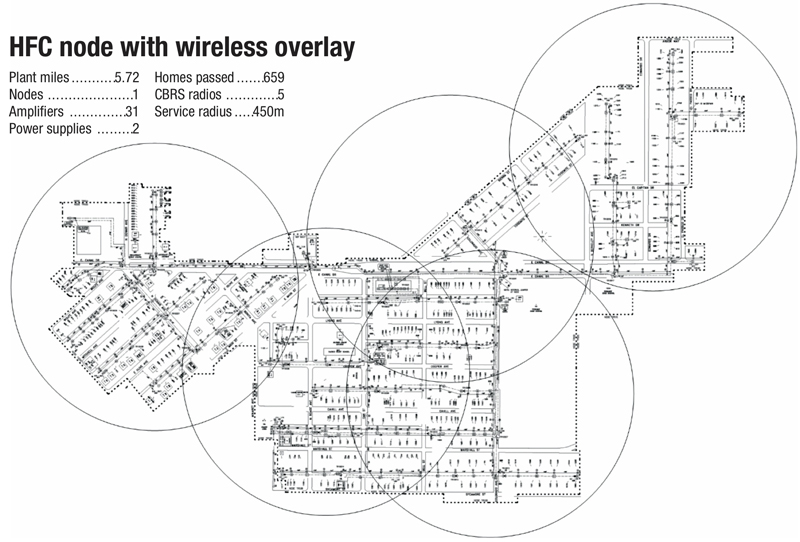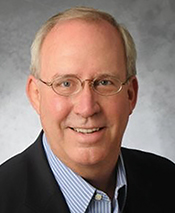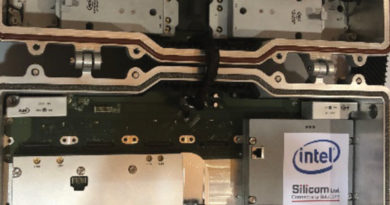Energizing Your HFC Network for the Future
New opportunities: New challenges
The past several years have not been dramatically different than those that preceded them, with cable system operators finding new and innovative ways to leverage the spectrum their wired networks can support. Spectrum reuse, typically referred to as node segmentation, has been used extensively to create smaller service groups and therefore more bandwidth per user. Operators are now beginning to expand the upstream capacity of their networks by transitioning to a 1.2 GHz mid-split or high-split architecture. Past upgrades have expanded the downstream spectrum while the upstream has been constrained to 5 MHz to 42 MHz for decades. Mid-split or high-split upgrades increase this to 5 MHz to 85 MHz and 5 MHz to 204 MHz respectively. At the same time that they are addressing current demands for bandwidth, more operators are entering the wireless business, either through mobile virtual network operator (MVNO) strategies or more recently as mobile network operators (MNOs) or a hybrid of the two. The availability of wireless spectrum under the Citizens Broadband Radio Service (CBRS) has created this opportunity for cable system operators. But all of these wireless radios being installed in the network in support of CBRS and Wi-Fi based services create new demands on the network. The plant upgrades account for the capacity required for backhaul of wireless traffic, but the radios require power to operate as well.
Watts the problem?
For the purpose of discussion, I have selected a single node area that is being considered for upgrade to 1.2 GHz high-split and created an overlay of CBRS small cell, strand mounted radios that observed several criteria, including: radio reach was limited to 450 meters, all radios were placed within the node area, and 100% of the node area was covered. In practice this fails to leverage the benefits of adjacent nodes and their coverage overlap, so please consider this case to be conservative. As you can see, there are five radios required to cover this area, at around 100 watts per radio, for an incremental powering requirement of 500 watts. In some cases this may be in reserve, but there are other considerations in addition to the pure power consumption. Some of these considerations follow. This is not intended to be a complete list, but it addresses those issues that can have the greatest impact on the HFC network
Power up!
Capacity Upgrades: Many operators’ networks contain power supplies that were placed into service many years ago, some rated for as little as 12 amps at 60 volts. In most cases power supplies can and will be converted from 60 volt systems to 90 volt systems at the time of the upgrade. This is often a “drop-in” upgrade. The higher voltage allows power to be delivered at reduced current, thereby minimizing the likelihood of exceeding through current limitations and reducing transmission “IR” losses in the coaxial cable. This is the same technique used by power companies to minimize transmission losses. Regulatory restrictions limit us to 90 V for cable systems.
In addition to an increase in the supply voltage it is often possible to increase the ampacity of the supply. Today’s power supplies offer capacity up to 21 amps. When doing so, balancing the loading becomes important in order to maximize the capabilities of the power supply while not exceeding through current limitations of devices downstream. Transitioning a single power supply from 60 V and 12 A to a 90 V 21 A supply represents an increase in available power from 720 watts to 1,890 watts, an increase of 1,170 watts and more efficient distribution as a bonus.
Designing for Consumption: The ability to manage consumption can make a dramatic difference in the impact that launching a wireless service has on the HFC network. Our industry has for decades observed a design practice of using peak draw for nodes and amplifiers. This is logical as the power consumption is most affected by temperature and therefore it affects all active devices in a node area equally and simultaneously. With wireless radios, the amount of traffic on the network is a primary contributor, and that makes consumption far more “lumpy.” It is likely that maximum power draw would be an expensive and unnecessary design criteria for wireless radios. Peak draw is appropriate as a design criteria for through current limitations however.
Through Current: Both active and passive devices have limitations for through current, defined as the current passing through or into the device through a 5/8-24 port connector. For active devices, directional couplers and power inserters this is typically limited to 15 amperes. For taps we are limited to 12 A in most cases. Exceeding these limits can cause low frequency interference (hum modulation) or can damage or destroy the device. Power supply location can greatly improve the efficiency of power delivery by choosing a location that is able to supply current in two or more directions in equal amounts.
Voltage Starvation: In cases where there are long coaxial runs in lower density plants, it is common for IR losses to reduce the voltage below the minimum required by powered devices while the power supply still has capacity to deliver current. In these cases, it is possible that a step-up transformer could provide an attractive alternative to placing a new power supply. There are manufacturers exploring this approach for use cases where appropriate.
Minimizing Impact in the HFC Network: Thus far we have considered those things that might seem obvious to many experienced engineers, but there is one less obvious point. Today’s typical strand mounted radios have a power consumption of about 100 watts. At 100 watts, a wireless radio can draw in excess of 2 amps of current, and this exceeds the current carrying capacity of nearly all F-connectors available today. Since a 90 volt design has a low voltage limit of 45 V, a connector that is capable of passing 2 amps can support a maximum draw of only 90 watts. Current draw exceeding 2 amps necessitates use of hardline coaxial connectors and therefore requires a directional coupler to be inserted. This introduces loss into the RF design and that could drive replacement of tap plates downstream from the radio, adding even more loss. All of these changes add cumulative loss to the RF signal path and could require amplifier relocation or even added amplifiers in some cases. This cascading design impact can force a significant design change to the network. It would be preferred to utilize a power passing tap plate of the same value as the RF design, as this would provide the needed power without impacting the RF design. To enable this, we must continue to work with the manufacturing community to reduce the power consumption of wireless radios through more efficient designs. We can also minimize occurrence of this problem by avoiding placing radios at the “end of the line” from a powered coax perspective where line voltage is lowest.
Bringing it all together
Wireless services are a significant part of our collective strategic initiatives, and it might seem daunting to envision adding several hundred watts of power consumption to over 100,000 nodes, but by taking advantage of voltage and ampacity increases, developing design criteria for “lumpy” distribution, managing through current and voltage starvation in the design process, reducing device draw to allow the use of power passing tap plates and locating devices carefully we can and will find cost effective solutions to the challenge of powering our next generation of HFC networks.


Ron Wolfe,
Sr. Director, OSP Engineering & Architecture,
Charter Communications, Inc.
ron.wolfe@charter.com
Ron Wolfe is the Sr. Director, OSP Engineering & Architecture for the Infrastructure Architecture and Engineering group in Englewood, Colorado. He is responsible for guiding Charter’s network evolution to support present and future technologies. Ron has held leadership roles in network engineering, product development, and solutions engineering throughout his four decades in the industry and is honored to be selected for induction into the CableTV Pioneers, Class of 2020. He joined Charter in 2014 as Sr. Director of Engineering.

